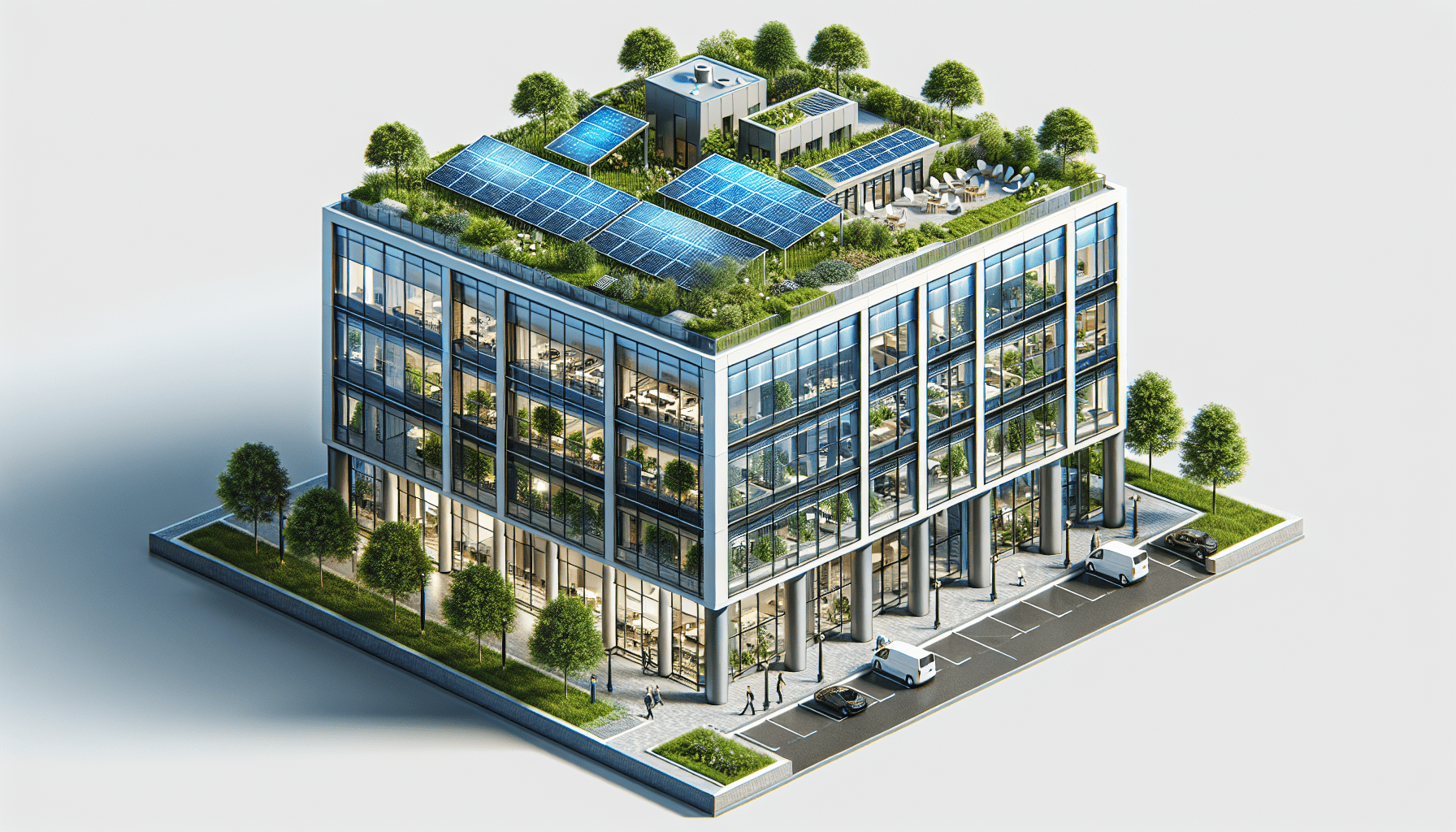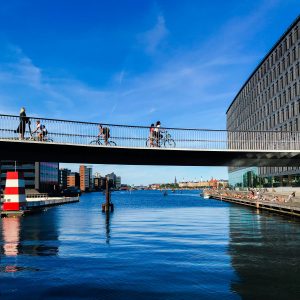Have you ever wondered what it means when a building advertises its LEED certification? We often see these signs on new developments or renovations, and it’s a symbol of pride and achievement in sustainable building practices. But what exactly does it entail, and why is it so important?
What is LEED Certification?
LEED, which stands for Leadership in Energy and Environmental Design, is a green building certification program used worldwide. LEED is a comprehensive system that addresses all building types, emphasizing the use of sustainable building materials, energy efficiency, water savings, and improved indoor environmental quality. Achieving LEED certification is a mark of excellence that sets buildings apart as environmentally responsible and resource-efficient places to live and work.
History of LEED Certification
LEED was developed by the U.S. Green Building Council (USGBC) in 1993. The goal was to create a standardized set of criteria to evaluate the environmental performance of buildings and promote sustainable design. Since its inception, LEED has evolved and adapted to reflect advancements in building technologies and environmental science.
Over the years, more organizations have embraced sustainable buildings, making LEED certification both a prestigious accolade and a practical framework for constructing eco-friendly structures. By following its guidelines, organizations can minimize their environmental footprint, enhance occupant health, and achieve operational cost savings.

The LEED Certification Process
Understanding LEED certification begins with knowing its process. The journey to LEED certification involves several key steps:
- Registration: Projects intending to seek LEED certification must first be registered with the USGBC.
- Documentation: Comprehensive documentation of sustainability practices, materials used, and strategies implemented must be prepared and submitted for review.
- Third-Party Verification: Independent third parties assess the documentation and perform on-site evaluations to verify compliance with LEED criteria.
- Certification Levels: Based on the number of points earned, a building can achieve one of four levels of certification: Certified, Silver, Gold, or Platinum.
LEED Rating System
The LEED rating system is built on a point-based structure with several categories. Points are awarded based on the building’s sustainability performance within these categories:
| Category | Description |
|---|---|
| Sustainable Sites | Encourages strategies that minimize the impact on ecosystems and water resources. |
| Water Efficiency | Promotes smarter use of water, inside and out, to reduce potable water consumption. |
| Energy and Atmosphere | Focuses on energy use reduction, efficiency, and renewable energy projects. |
| Materials and Resources | Encourages sustainable building materials and waste reduction. |
| Indoor Environmental Quality | Promotes better indoor air quality and access to natural light and views. |
| Innovation | Encourages innovative strategies and exemplary performance in any category. |
| Regional Priority | Addresses unique environmental concerns based on the project’s geographic location. |
LEED Certification Levels
The total number of points a project earns determines the certification level achieved:
- Certified: 40-49 points
- Silver: 50-59 points
- Gold: 60-79 points
- Platinum: 80+ points
Importance of LEED Certification
Attaining LEED certification is significant for several reasons. These include the environmental benefits, financial incentives, and social advantages linked with sustainable building practices.
Environmental Benefits
One of the primary motivations for pursuing LEED certification is the positive environmental impact. LEED-certified buildings use less water and energy, produce fewer greenhouse gas emissions, and often make better use of sustainable materials. They contribute to healthier, more sustainable communities by reducing resource consumption and promoting eco-friendly practices.
Financial Incentives
LEED-certified buildings can also offer economic benefits. While the initial costs may be higher due to advanced materials and technologies, the long-term savings can be significant. Reduced energy and water bills, lower maintenance costs, and even tax incentives or rebates for green buildings can offset initial investments, ultimately leading to financial savings.
Social Advantages
In addition to environmental and financial gains, LEED-certified buildings provide social benefits. They tend to have better indoor air quality, more natural light, and improved occupant comfort. These enhancements can lead to increased productivity, better health outcomes, and higher satisfaction among tenants and employees.

Key Components of LEED Certification
To better understand what LEED certification entails, let’s take a closer look at the key components of the framework.
Sustainable Sites
The Sustainable Sites category emphasizes the importance of selecting optimal building locations and managing site impacts responsibly. Strategies can include:
- Site Selection: Choosing sites that have minimal environmental impact.
- Transportation Options: Promoting alternative transportation like walking, biking, or public transit to minimize the use of fuel-powered vehicles.
- Heat Island Reduction: Implementing strategies to reduce heat absorption by the building and its surroundings.
- Rainwater Management: Managing stormwater runoff to reduce strain on local water treatment facilities.
Water Efficiency
The Water Efficiency category focuses on decreasing the use of potable water both inside the building and on its surrounding landscape. Important strategies include:
- Indoor Water Use Reduction: Installing water-efficient fixtures and appliances to limit water use.
- Outdoor Water Use Reduction: Utilizing drought-resistant plants and efficient irrigation systems.
- Water Metering: Implementing systems to monitor and manage water usage effectively.
Energy and Atmosphere
Energy consumption is a major consideration in the LEED certification process. This category involves:
- Energy Performance: Enhancing the energy performance of the building through better design and operational strategies.
- Renewable Energy: Incorporating renewable energy systems like solar or wind power.
- Commissioning: Ensuring building systems are designed, installed, and maintained to operate as intended.
- Refrigerant Management: Minimizing the use of refrigerants that deplete the ozone layer.
Materials and Resources
In this category, emphasis is placed on sustainable construction materials and waste management methods. Strategies cover:
- Building Reuse: Reusing existing structures and materials to minimize waste.
- Recycled Content: Using materials that are sustainably sourced and have recycled content.
- Waste Reduction: Efficient waste management and recycling systems during construction and occupancy.
Indoor Environmental Quality
A healthy indoor environment is crucial for the well-being of building occupants. This category addresses:
- Air Quality: Using low-emission materials, providing adequate ventilation, and implementing air quality management plans.
- Lighting: Maximizing natural light and using energy-efficient lighting systems.
- Thermal Comfort: Ensuring consistent indoor temperatures to enhance occupant comfort.
- Acoustic Performance: Reducing noise levels to create a quieter indoor environment.
Innovation and Regional Priority
These components allow projects to earn extra points for exceptional performance or innovative practices not covered in existing LEED categories.
- Innovation: Encouraging unique strategies that demonstrate exemplary performance beyond standard LEED requirements.
- Regional Priority: Addressing local priorities and specific regional concerns, thus promoting context-specific sustainable practices.
Achieving LEED Certification: Steps and Strategies
Attaining LEED certification is a structured process, but it requires careful planning, collaboration, and execution. Let’s break down these phases further.
Pre-Design Phase
During the pre-design phase, the project team sets goals and benchmarks for LEED certification. This phase involves:
- Feasibility Analysis: Assessing the project’s potential for integrating sustainable practices.
- Setting Objectives: Defining clear sustainability goals and identifying the desired LEED certification level.
- Identifying LEED Credits: Selecting relevant LEED credits that align with the project’s objectives.
Design Phase
The design phase focuses on incorporating sustainable practices into the architectural and engineering plans. Key steps include:
- Integrative Process: Collaborating across disciplines to develop strategies that achieve sustainable outcomes.
- Simulations and Modeling: Utilizing energy and water modeling tools to predict the building’s performance and make necessary adjustments.
- Material Selection: Specifying the use of sustainable materials with low environmental impact.
Construction Phase
During construction, project teams work to implement the design strategies. This includes:
- Construction Management: Ensuring that construction practices align with LEED guidelines.
- Quality Control: Regularly monitoring the construction process to ensure compliance with LEED requirements.
- Documentation: Maintaining thorough records of all sustainable practices and materials used.
Post-Construction Phase
After construction is completed, it’s crucial to verify performance and make necessary adjustments. This involves:
- Commissioning: Testing building systems to confirm they are operating as intended.
- Performance Monitoring: Continuously monitoring energy and water usage.
- Occupant Engagement: Educating occupants on sustainable practices and how to use the building’s green features effectively.

Challenges and Criticisms of LEED Certification
While LEED certification has numerous benefits, it is not without challenges and criticisms. Understanding these can help us refine our approach and address potential limitations.
Cost and Complexity
LEED certification can sometimes be perceived as costly and complex, especially for smaller projects with limited budgets. The need for specialized consultants, additional documentation, and third-party verification can increase overall project costs. However, these initial investments can often be offset by long-term savings and returns on investment through increased building efficiency.
Implementation Challenges
Achieving LEED certification demands meticulous planning and coordination across various disciplines. It requires commitment from all project stakeholders, which can sometimes be challenging to harness. Maintaining clear communication and collaboration is essential for successfully achieving the desired certification level.
Greenwashing Concerns
Greenwashing refers to the practice of making misleading claims about the environmental benefits of a product or building. Some critics argue that LEED certification might enable greenwashing if superficial changes are made just to earn certification points without committing to substantial sustainability improvements. To counter this, it’s vital for project teams to focus on genuine, impactful sustainable practices rather than simply chasing points.
Performance Verification
While LEED sets a strong foundation for sustainable building practices, ongoing performance verification post-certification can be challenging. Ensuring that buildings continue to perform efficiently over time requires continuous monitoring and adjustments. This can sometimes be overlooked, leading to discrepancies between designed performance and actual operational efficiency.
Future of LEED Certification
As the world continues to prioritize sustainability, the future of LEED certification looks promising. With evolving regulations, advancements in technology, and increased awareness of environmental issues, LEED certification will likely continue to shape the building industry.
Technological Advancements
Innovations in building technology, such as smart building systems, advanced materials, and energy-efficient appliances, will enhance the capabilities of LEED-certified buildings. These advancements can help projects achieve higher levels of sustainability, performance, and occupant satisfaction.
Global Expansion
Initially focused on the United States, LEED certification has gained global traction. As more countries adopt sustainable building practices, LEED’s international presence will expand further. This global influence will foster a unified standard for green building practices worldwide.
Evolving Standards
The USGBC continues to update and refine LEED standards to reflect the latest scientific research, industry trends, and environmental concerns. As the guidelines evolve, they will incorporate new strategies for addressing emerging sustainability challenges, such as climate change resilience and net-zero energy buildings.
Integration with Other Certifications
LEED certification is one of many sustainability standards in the building industry. Integrating LEED with other certifications like WELL, Living Building Challenge, or BREEAM can create comprehensive, holistic strategies for building health and sustainability. This integrated approach can maximize the overall environmental and social benefits of construction projects.

Conclusion
Understanding LEED certification is crucial for anyone involved in building design, construction, or management. LEED standards provide a valuable roadmap for creating environmentally responsible, resource-efficient buildings that benefit occupants, owners, and the planet. While challenges exist, the long-term benefits of LEED certification, from environmental impact to financial savings and occupant health, make it a worthwhile endeavor.
As we continue to prioritize sustainability in our communities, LEED certification will play a key role in shaping the future of the built environment. By committing to these standards, we can help create a greener, healthier, and more sustainable world for generations to come.



